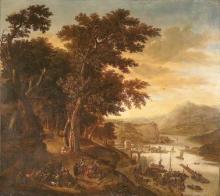General considerations
The Committee has drawn up its opinion with due regard for the relevant lines of policy issued by the Ekkart Committee and the government.
The Committee asked itself whether it is acceptable that an opinion to be issued is influenced by its potential consequences for decisions in other cases. The Committee resolved that such influence cannot be accepted, save cases where special circumstances apply, since allowing such influence would be impossible to justify to the applicant concerned.
The Committee then asked itself how to deal with the circumstance that certain facts can no longer be traced, that certain data has been lost or has not been retrieved, or that evidence can no longer be otherwise compiled. On this issue the Committee believes that, if the problems that have arisen can be attributed at least in part to the lapse of time, the associated risk should be borne by the government, save cases where exceptional circumstances apply.
Finally, the Committee believes that insights and circumstances which, according to generally accepted views, have evidently changed since the Second World War should be granted the status of new facts.
The Restitutions Committee bases its advice on the lines of policy relating to the Ekkart Committee and the government. The Restitutions Committee asked itself the question of whether any advice it might issue would be influenced by possible consequences for the decision in other matters. The Committee answers that question in the negative, barring exceptional circumstances, because such an influence may be objected to vis-à-vis the party making the request. The Restitutions Committee also asked itself how it should deal with the problem that certain facts can no longer be retrieved, that certain data has been lost or cannot be retrieved, or that other proof can no longer be provided. In relation to this matter, the Committee is of the opinion that, if the period of time is (partly) the cause of the problems that have arisen, the risk, barring exceptional circumstances, should be borne by the government. The Restitutions Committee is lastly of the opinion that insights and circumstances that have evidently changed since the Second World War must, according to societal views, be put on a par with new facts.
